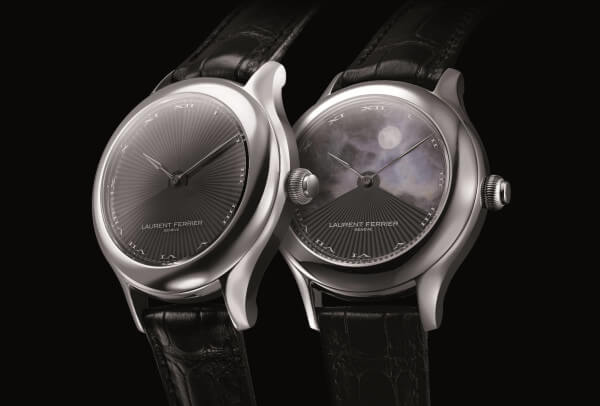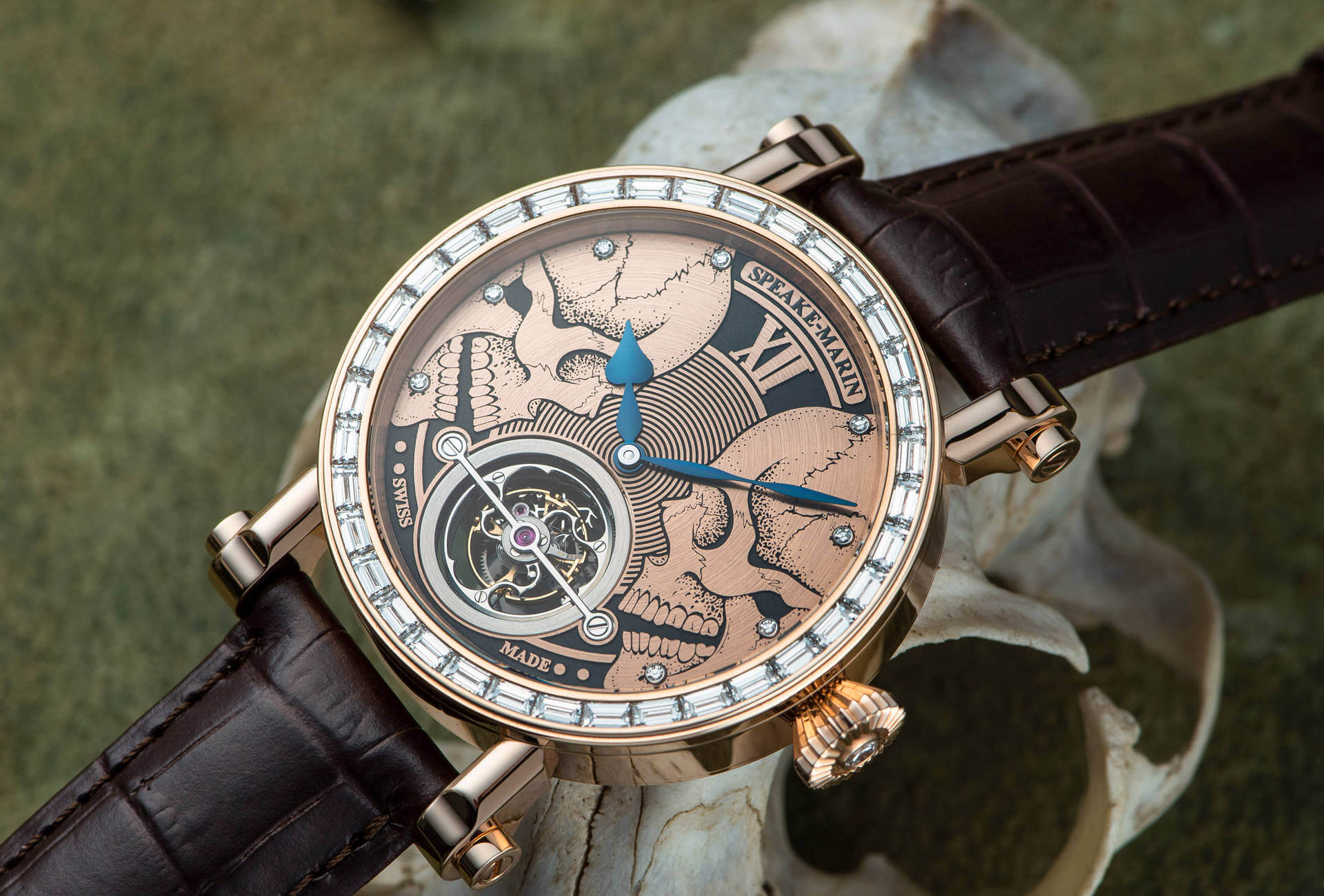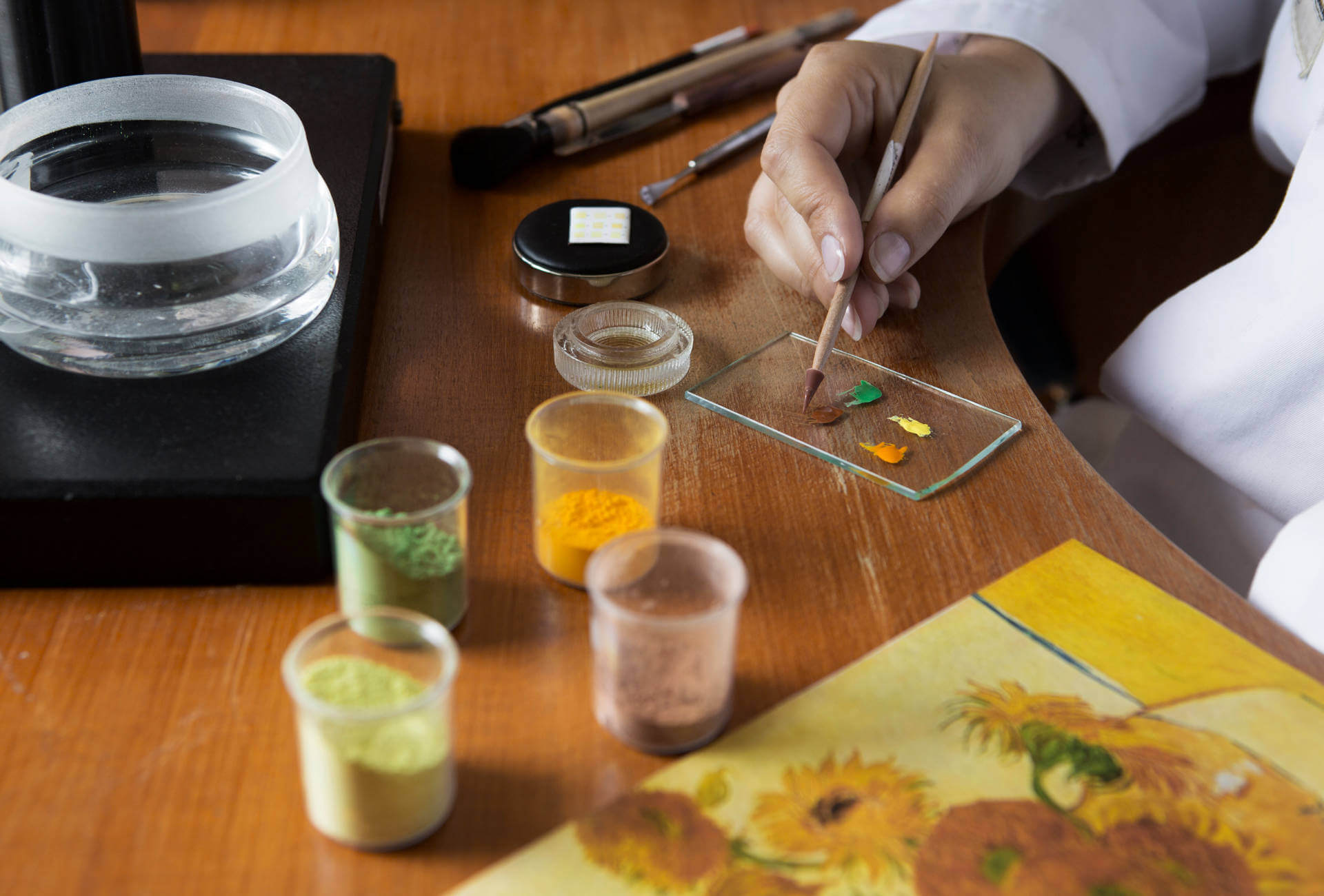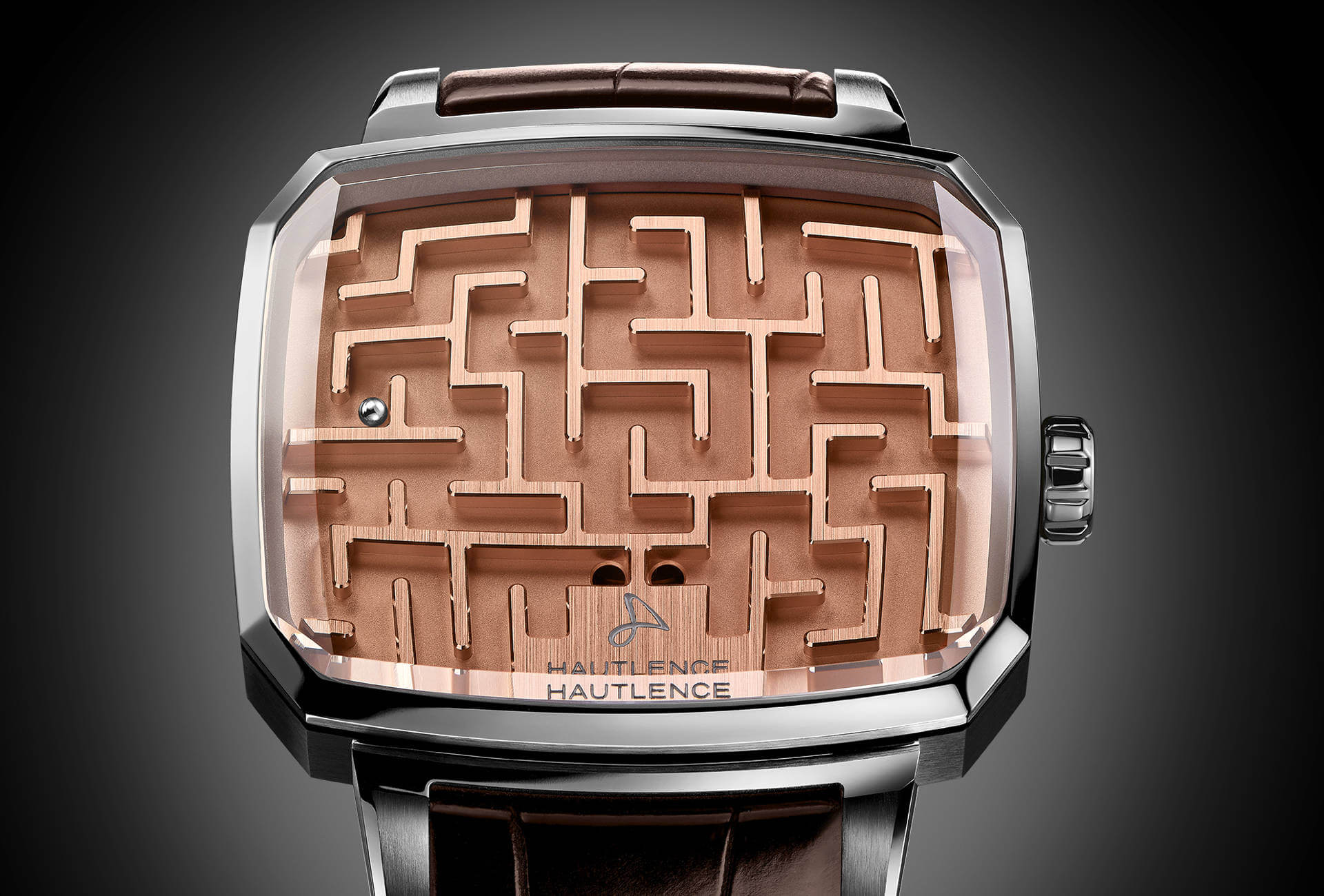1645. Classical painting was at its apogee, as was watchmaking whose aesthetic and technical refinement had reached a pinnacle. The noble class coveted the prestige inferred by such a precious ornament, particularly one that was also the mark of a progressive mind. What a symbol to carry in one’s pocket the ultimate demonstration of the science and arts of the day, contained within a superb and costly object that fitted in the palm of the hand! What a privilege to thus be able to “tell the time” and elicit the admiration of the King’s Court!
The Rape of Europa and Mercury and the Three Graces
Here we have one of the finest watches there is, conserved at the Metropolitan Museum of Art (MET) in New York: The Rape of Europa and Mercury and the Three Graces. The exterior of the case depicts mythological scenes, the denuded Graces and suggestive atmospheres.
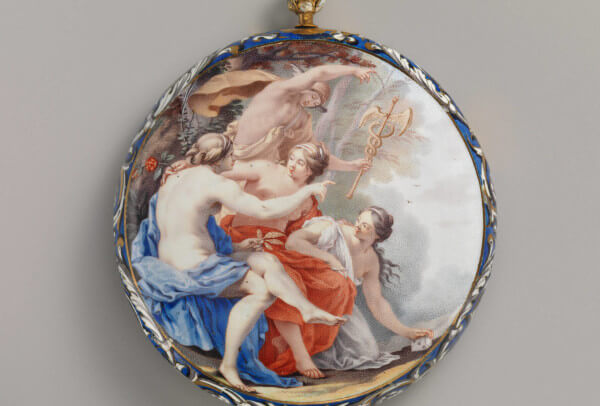
On one side, Mercury, the god of merchants, seduces three charming young women. On the other, Europa languishes against a white bull that is none other than Zeus himself, who will abduct and ravish her. These two exquisite enamel miniatures are reproductions of paintings by Simon Vouet, “first painter to the King” Louis XIII and to Cardinal Richelieu.
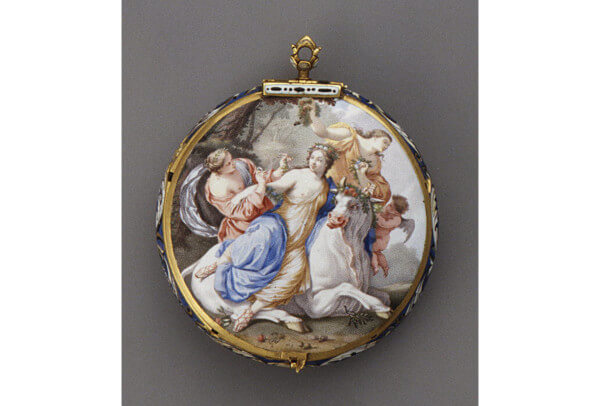
He imported the Italian Baroque style to France. The Rape of Europa bears such a striking resemblance that Vouet’s painting no doubt served as a model to the Parisian enameller, or enamellers, who produced the miniature. Enamelled cases of this period were rarely signed. However, the hand is very much that of the still renowned Henri Toutin, first of Châteaudun then, after 1636, of Paris.
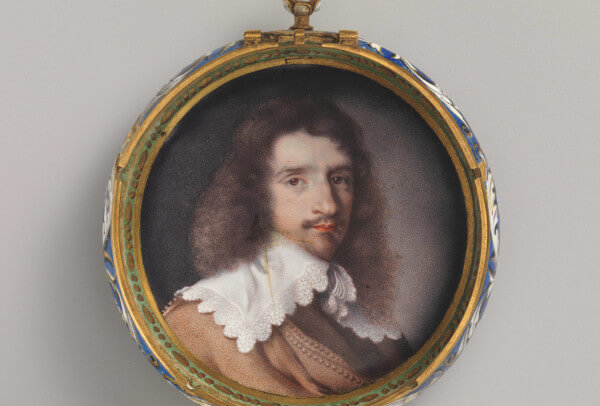
The interior, which is equally refined, tells us more about the owner of the watch, which was the property of Louis Hesselin (1602–1662). He went by the magnificent title of Surintendant des plaisirs du Roy Louis XIV, that is he had responsibility for arranging entertainment for His Majesty. What more glamorous function, indeed? But has not watchmaking always been a source of immense pleasure? Louis Hesselin, a choreographer of ballets, organiser of sparkling receptions, and a friend of Toutin, is depicted on the inside cover, after an engraving by Robert Nanteuil, the most coveted portraitist at the Court of Versailles. The dial is emblazoned with Hesselin’s coat of arms.
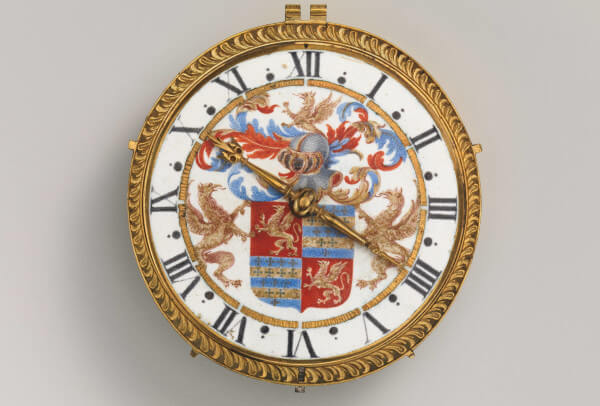
The intimacy that existed between grand royal art and the most advanced watchmaking techniques of the day – which were to be found in Holland – is best demonstrated by the stylistic consanguinity of the two. The engraved decoration of the movement cover with its sumptuous swirling tendrils is like the frame around a precious painting. Horology and art both came of age in this era and, having reached similar levels of development, the two were probably never closer.
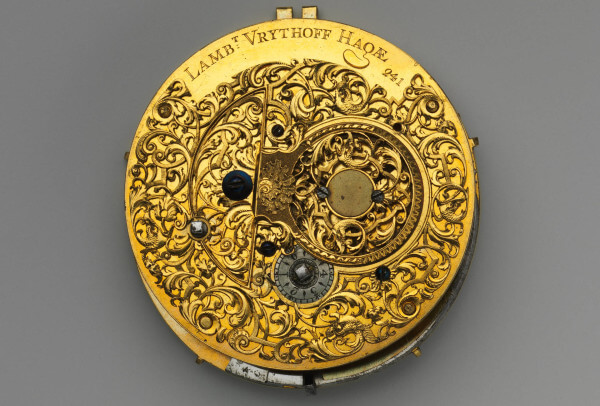
Anthony and Cleopatra
Largely forgotten today, Sébastien Bourdon was a celebrated artist of his time, and it is therefore no surprise that one of his works should be reproduced in enamel on this watch. A virtuoso painter of precocious talent, by the age of twenty he had “assimilated all that painting has to offer in terms of genres and temperaments”. It was with great ease that he adopted the style of the grand masters, and this would be a mark of his success. A Reformed Protestant from a humble background, Bourdon travelled to Rome but, threatened by the Inquisition, was forced to flee. Back in France, his reputation grew and commissions for paintings came pouring in.
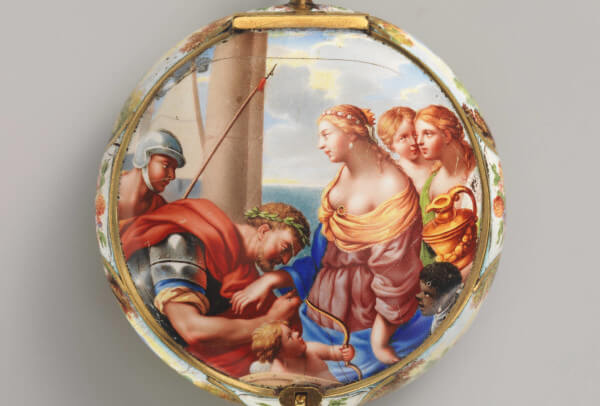
The watchmakers of Blois, an important centre of production for enamel miniatures, proved that they were also shrewd merchants when they chose to reproduce one of Bourdon’s works. The painter was at the height of his fame – in 1652 he was even appointed “first painter” to Queen Christine of Sweden – and the darling of a wealthy and cultured clientele… exactly the patrons for a watch such as this.
Roman Charity
Beyond its intrinsic artistic and horological worth, this watch wonderfully illustrates the many exchanges taking place between the cities that made up the fabric of prestigious European watchmaking at that time. The aptly-named Pieter Klock was one of the foremost watchmakers of Amsterdam. He took delivery of the case from the Huaud brothers in Geneva. Their father, a French Protestant, had sought refuge in Geneva in 1630 and set up there as a master-jeweller in 1634. His sons, in turn, would earn a reputation as two of the city’s most talented artists, specialising in enamelled cases for export.
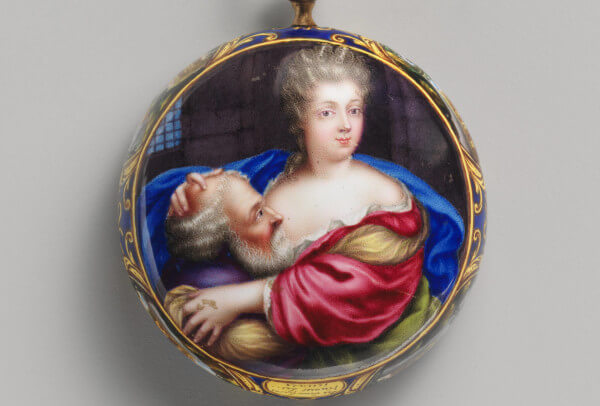
The scene depicted here would have been a familiar image across Europe. Rubens, among others, painted it several times. It shows Pero breastfeeding her father, Cimon, who is dying of starvation in a prison cell, symbolised by the bars just visible at 10 o’clock. This Roman Charity owes its name to a story told by the Roman historian Valerius Maximus. And what better pretext to slip in a portrait of an attractive young woman in an unorthodox situation, and still have a clear conscience.
Portrait of Friedrick Wilhelm, the Great Elector
Between 1686 and 1700, the two Huaud brothers (see previous watch) worked in Berlin, at the court of Friedrick Wilhelm, Elector of Brandenburg (1620–1688). This enamel painting by Jean-Pierre, the elder of the two, is therefore a portrait of their employer.
After scenes drawn from mythology and ancient history, the watch takes the face of Power. Few objects were better suited to such a show of authority. Not only was the watch a “high tech” product and an object of immense prestige, it was also a sort of “portable painting”, easily carried in the pocket to be proudly worn by its august owner on his various travels. From its earliest days, watchmaking prospered by offering the rich and powerful a precious reflection of their privileged status. A second watch depicting the Elector’s wife, Sophia, is conserved at the Beyer Clock and Watch Museum in Zurich.
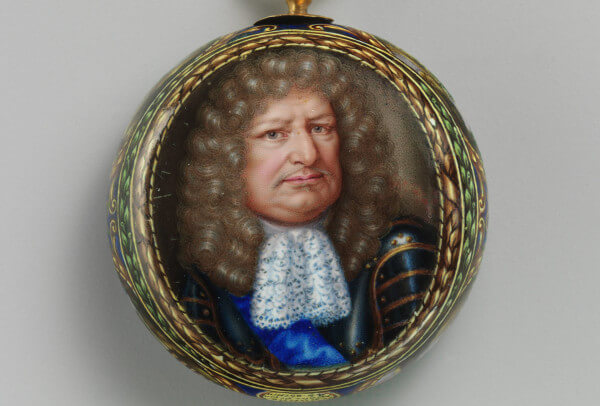
Miniature self-portrait "with beard and Moldavian hat"
Jean-Etienne Liotard – born in Geneva in 1702 to a Huguenot father who fled Montélimar in France for Geneva – is one of the few enamel miniaturists to have earned distinction in another medium; in Liotard’s case, pastel. There were no impermeable boundaries between artistic practice and artisanship at that time, as Liotard’s trajectory shows. We see him here in Turkish dress, a style favoured also by Jean-Jacques Rousseau. Calvin’s Geneva and the Constantinople of the Ottomans had numerous ties, and watchmaking played a prominent role in these relations. A specialist clock repairer, Isaac Rousseau, the philosopher’s father, sojourned regularly in Constantinople between 1705 and 1711. Horology was at the heart of exchanges between civilisations, and at the same time a true reflection of its era.

Nicholas I, Tsar of Russia
A century later, the portrait-watch had lost none of its appeal and was as much in use as ever. Horological techniques, in contrast, had moved on considerably. The movement inside this pocket watch benefits from a keyless winding mechanism, one of the earliest to have been produced in quantity. François Czapek was the original associate of Antoine Norbert de Patek. After the two parted company, Patek found a new partner in Jean-Adrien Philippe, the inventor of the stem-winding mechanism which was patented in 1845. The two met at the 1844 Universal Exposition in Paris.

Watchmaking could now combine precision mechanics, facility of use and artistic prestige. The style of the portrait (probably a gift to the Tsar), its “frame” of gilded acanthus leaves, the solemn pose… these are all characteristic of the official portraiture of that era, here in pocket format.
Patek Philippe, Souvenir de Mortefontaine
This piece, which dates from 2006, testifies to the persistent and nostalgic influence of figurative painting on watchmaking. Corot painted this melancholic depiction of the lake at Mortefontaine, close to Ermenonville in northern France, in 1850. Titled Souvenir de Mortefontaine, it was bought directly from the artist by the French State in 1864, and in 1869 was hung in the Louvre. Dappled brushstrokes, a vaporous atmosphere, darts of light on the surface of the water… painting is in the throes of change. Impressionism is bubbling under the surface. Until now, decorative watchmaking had been in phase with the painting of its day; henceforth, the two would gradually part ways. Painting would be radically transformed but horology would remain, as it is today, firmly attached to realistic representations.
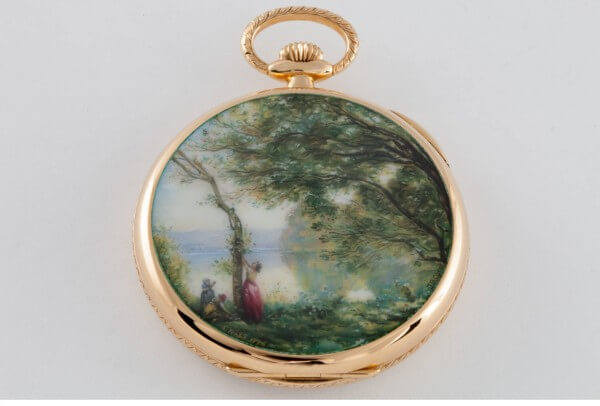
Delaneau, Unique Piece
Impressionism has only recently made its debut in watchmaking. This piece by Delaneau is an example. Capture light and movement, convey the atmosphere of an Impressionist painting, detach oneself from realism… these are complex challenges for an enameller who must work colour by colour, in successive layers. Impressionism may be far behind us, the result nonetheless brings a touch of modernity to this ancestral art.
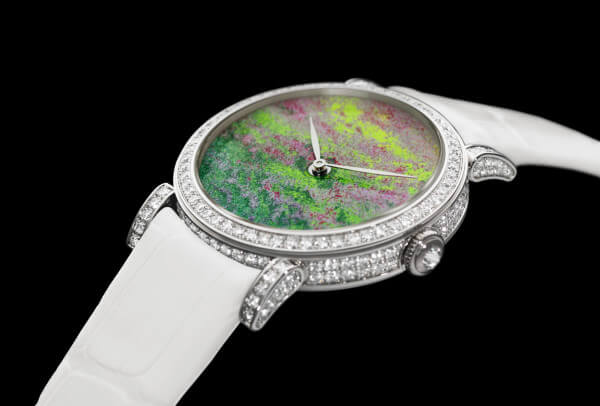
Laurent Ferrier, Galet Secret
Press the crown, and the dial opens like a fan to reveal a romantic sky, the work of the talented enamel artist Anita Porchet. The watch plays hide-and-seek with pictorial representation but its inspiration, however rich, takes us back to a time when painting was still enamoured of a romantic, spellbinding nature.
